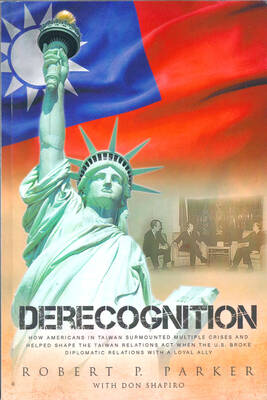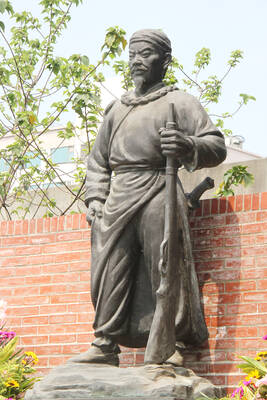What the author of this strange book describes and struggles to understand is a kingdom on the island of Sumatra (in modern Indonesia) during the 17th and 18th centuries. It left no written records of a chronological kind, and the evidence has had to be pieced together from fanciful, myth-based texts, plus the accounts of the Dutch colonizers.
Minangkabau was an important state, situated midway down the west coast of the island. The kings, living in a mountainous interior far away from the coastal settlements, reigned over their people without armies to enforce their will. They were perceived as sacred beings, and ruled largely by sending out elaborate letters. These letters, rhetorically worded and lavishly illustrated, form the main object of the author's study.
Economic historians, and others trained in the materialist Western tradition, have always seen court rituals and the like as mere symbols, cover for a more ruthlessly physical exercise of power. Leaders dazzled the ignorant populace with processions, but what they were really doing was taking the people's wealth in taxes, collected by force if necessary. But here is a kingdom, Drakard argues, where claims of magical power were the beginning and end of all authority.
This is not an easy book to read. It is awash with words like "semiotic," "syntagmatic"and "paradigmatic" (all three occurring in a single sentence). But what it describes is curious indeed. The author's attitude to her material, however, is even more intriguing.
A typical Minangkabau royal letter would begin by establishing the king's lineage, would then list his possessions, and end by issuing a brief instruction, such as that the bearer be given safe passage.
The lineage invariably claimed by the kings was one of direct descent from Iskandar Zulkarnain, whose three sons were considered to have fathered the dynasties of China, the Ottoman Empire, and Minangkabau respectively.
Among the magical objects the Minangkabau kings claimed to possess were a crown that had belonged to Adam, a loom that moved of its own accord, once every year, and wove a fabric that had existed since the beginning of time, a sword that bore marks from a fight with a devil, a dagger that resisted being sheathed, and a drum made from the skins of lice.
The Dutch unsurprisingly looked on such things with a skeptical eye. Though they were undoubtedly eager to lay their hands on the gold for which Minangkabau was famous, they were also heirs to a national tradition of tough-minded practicality that held all myths, and most religions, as fanciful fabrications.
But Jane Drakard leans over backward not to mock any of her material, and to resist the obvious conclusion that such claims were put about to deceive the gullible and ensure taxes, payable in gold, were handed over to their sovereign.
Emperors and kings worldwide have sought to impress their subjects using very similar methods. So, there's really nothing unusual about these royal Sumatrans. The populace may have been so extensively fooled by their claims that little force was needed to maintain their hold on power, but that's the only way they differ from the norm. For Jane Drakard to claim otherwise suggests that she has been subjected to some very odd ideological pressures.
It is not, unfortunately, hard to see what these pressures might have been. The particular preconceptions that apply in this case are that the perceptions of colonizing powers were always wrong, that all cultural assumptions have equal claims to truth, and that it's necessary to listen to the voices of formerly oppressed peoples whose plight has hitherto been overlooked.
These aims and ambitions are eminently worthy, except when they fly in the face of the facts. And the facts here are unmistakable -- that the claims of these kings of old were as ridiculous as the Dutch considered them to be.
Moreover, it's doubtful if the modern descendants of the people described in this book would be very grateful for such present-day endorsements of the trickery of their former rulers.
One other feature of the book is more than a little surprising. Historians and modern travelers invariably point to the Minangkabau people's matrilineal social structure. Bill Dalton, in his Indonesia Handbook, credits them with being perhaps the world's largest matrilineal society. Oddly, Jane Drakard makes no mention of this issue.
Nevertheless, what remains of interest in this book is the light it throws on the way words can be used, not only to educate and enlighten, but to baffle and confuse. In societies where most people can't read, books and elaborately penned letters can be objects of considerable power.
A Kingdom of Words
By Jane Drakard Hardback
322 Pages
Oxford University Press Review

One of the biggest sore spots in Taiwan’s historical friendship with the US came in 1979 when US president Jimmy Carter broke off formal diplomatic relations with Taiwan’s Republic of China (ROC) government so that the US could establish relations with the People’s Republic of China (PRC). Taiwan’s derecognition came purely at China’s insistence, and the US took the deal. Retired American diplomat John Tkacik, who for almost decade surrounding that schism, from 1974 to 1982, worked in embassies in Taipei and Beijing and at the Taiwan Desk in Washington DC, recently argued in the Taipei Times that “President Carter’s derecognition

This year will go down in the history books. Taiwan faces enormous turmoil and uncertainty in the coming months. Which political parties are in a good position to handle big changes? All of the main parties are beset with challenges. Taking stock, this column examined the Taiwan People’s Party (TPP) (“Huang Kuo-chang’s choking the life out of the TPP,” May 28, page 12), the Democratic Progressive Party (DPP) (“Challenges amid choppy waters for the DPP,” June 14, page 12) and the Chinese Nationalist Party (KMT) (“KMT struggles to seize opportunities as ‘interesting times’ loom,” June 20, page 11). Times like these can

JUNE 30 to JULY 6 After being routed by the Japanese in the bloody battle of Baguashan (八卦山), Hsu Hsiang (徐驤) and a handful of surviving Hakka fighters sped toward Tainan. There, he would meet with Liu Yung-fu (劉永福), leader of the Black Flag Army who had assumed control of the resisting Republic of Formosa after its president and vice-president fled to China. Hsu, who had been fighting non-stop for over two months from Taoyuan to Changhua, was reportedly injured and exhausted. As the story goes, Liu advised that Hsu take shelter in China to recover and regroup, but Hsu steadfastly

You can tell a lot about a generation from the contents of their cool box: nowadays the barbecue ice bucket is likely to be filled with hard seltzers, non-alcoholic beers and fluorescent BuzzBallz — a particular favorite among Gen Z. Two decades ago, it was WKD, Bacardi Breezers and the odd Smirnoff Ice bobbing in a puddle of melted ice. And while nostalgia may have brought back some alcopops, the new wave of ready-to-drink (RTD) options look and taste noticeably different. It is not just the drinks that have changed, but drinking habits too, driven in part by more health-conscious consumers and